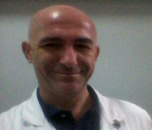
Biography
Biography: Luigi Santacroce
Abstract
Actually, several studies have established a relationship between microorganisms and chronic conditions such as atherosclerosis, neurologic disorders, cancer, and obesity. The link between microorganisms and increasing numbers of diseases never before envisioned as having microbial etiology opens fascinating scientific, medical, and public health perspectives. Apart from bacteria as Helicobacter pylori, experimental and epidemiologic data show a causative role for viruses, particularly in cervical and liver cancer, than viruses must be thought of as one of the most important risk factor for cancer development in humans. As a consequence, today we can be certain that many cancers have aetiologies with infectious agents as necessary factors. Several DNA tumor viruses encode viral oncoproteins that can directly transform the cells. In vitro tests (i.e., using the NIH/3T3 cell stocks) allowed to clarify that the nonviral tumors have endogenous activated oncogenes. Generally, tumor viruses, after the infection of their host, determine mild disease conditions or no, or cause non-neoplastic diseases (e.g., HBV). This natural condition is just one of the reasons why it is so difficult to identify the viral agents as causal factors for human cancers. HPV is one of the most recent virus focused as responsible for cancers other than cervical. The clinical scenarios of HPV infection depend from the site of the lesion and the virus serotype. In fact, HPV DNA was detected in 100% of cervical carcinomas, 40% in tumors of the penis, as well as vulvar and vaginal, in 90% in anal carcinomas, 12% in oropharyngeal carcinomas and 3% of cancers of the mouth. Viruses may contribute to the development of human tumors both indirectly, inducing immunosuppression or modifying the host cell genome without persistence of viral DNA, and directly inducing oncoproteins or by altering the expression of host cell proteins at the site of viral DNA integration.


